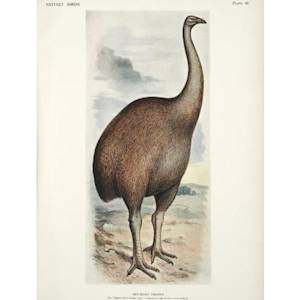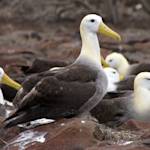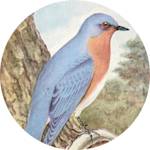Hooded grebe
2022 CE • Patagonia
"The known history of the Hooded Grebe starts in 1974 when, almost by accident, renowned Argentinian naturalist Mauricio Rumboll discovered it at Los Escarchados Lake in the south-west corner of Santa Cruz Province, Patagonia. Rumboll found the new species to be one of the most colourful and striking grebes in the world, with a spectacular courtship display to rival that of its more famous cousin, Great Crested Grebe . . . During the early 2000s, concerns about the species started to increase. Naturalists and birders had more and more trouble finding it, both at its breeding and wintering sites . . . [The] species’ population currently numbers just 750 breeding adults – an 80% plummet since the 1980s . . . One of the greatest threats is something that affects all of the planet’s biodiversity, along with humanity itself: climate change. Its impacts can be seen in the incredibly fast reduction in the number of lakes available for the grebes to breed in." Another major threat to the Hooded grebe is the invasive American Mink, introduced to Patagonia in the early 20th century in order to generate fur production and stimulate area economy. Having never encountered a swimming mammal predator, the Hooded grebe was devastated by this introduction: "[the] most tragic record is 33 individuals killed in just one night, in an area which is now part of Patagonia National Park." While numbers of the hooded grebe remain low, there are significant conservation efforts underway working to control predator populations and the implementation of captive rearing programs, which is slowly showing positive signs towards future species recovery.
Kini Roesler, "Dancing on the edge: Hooded Grebe’s recovery journey," BirdLife International, January 6, 2022.
Image: Juan María Raggio (Vicepresident and Board of Directors of NGO AVES ARGENTINAS; BirdLife International in Argentina, located on Matheu 1246, Autonomous City of Buenos Aires)., CC BY-SA 4.0 <https://creativecommons.org/licenses/by-sa/4.0>, via Wikimedia Commons


Learn about Maya Lin’s fifth and final memorial: a multi-platform science based artwork that presents an ecological history of our world - past, present, and future.

Discover ecological histories and stories of former abundance, loss, and recovery on the map of memory.

Learn how we can reduce our emissions and protect and restore species and habitats – around the world.

See how art can help us rethink the problems we face, and give us hope that each one of us can make a difference.

Help make a global memorial something personal and close to home. Share your stories of the natural world.


